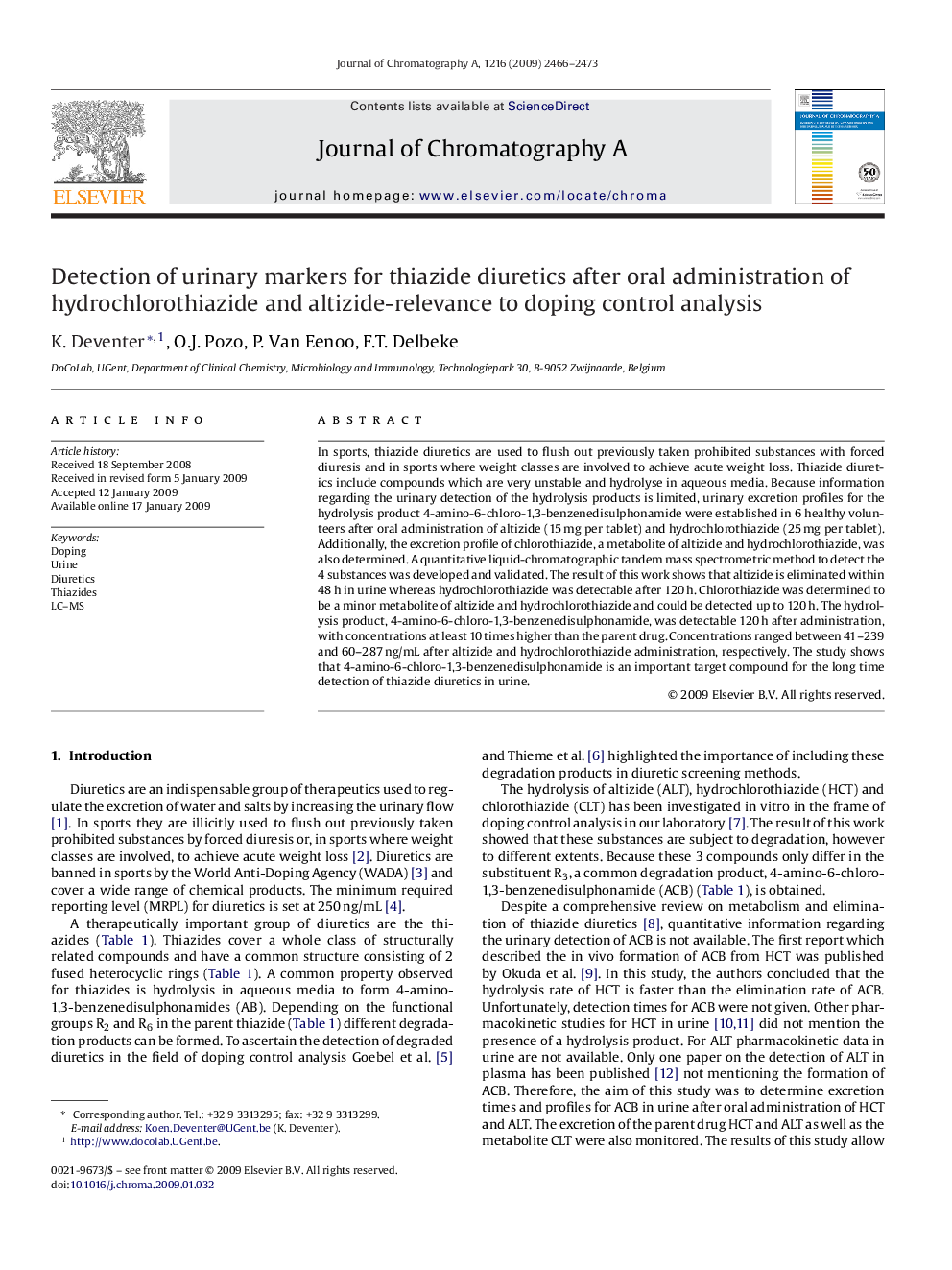| Article ID | Journal | Published Year | Pages | File Type |
|---|---|---|---|---|
| 1206775 | Journal of Chromatography A | 2009 | 8 Pages |
In sports, thiazide diuretics are used to flush out previously taken prohibited substances with forced diuresis and in sports where weight classes are involved to achieve acute weight loss. Thiazide diuretics include compounds which are very unstable and hydrolyse in aqueous media. Because information regarding the urinary detection of the hydrolysis products is limited, urinary excretion profiles for the hydrolysis product 4-amino-6-chloro-1,3-benzenedisulphonamide were established in 6 healthy volunteers after oral administration of altizide (15 mg per tablet) and hydrochlorothiazide (25 mg per tablet). Additionally, the excretion profile of chlorothiazide, a metabolite of altizide and hydrochlorothiazide, was also determined. A quantitative liquid-chromatographic tandem mass spectrometric method to detect the 4 substances was developed and validated. The result of this work shows that altizide is eliminated within 48 h in urine whereas hydrochlorothiazide was detectable after 120 h. Chlorothiazide was determined to be a minor metabolite of altizide and hydrochlorothiazide and could be detected up to 120 h. The hydrolysis product, 4-amino-6-chloro-1,3-benzenedisulphonamide, was detectable 120 h after administration, with concentrations at least 10 times higher than the parent drug. Concentrations ranged between 41–239 and 60–287 ng/mL after altizide and hydrochlorothiazide administration, respectively. The study shows that 4-amino-6-chloro-1,3-benzenedisulphonamide is an important target compound for the long time detection of thiazide diuretics in urine.
